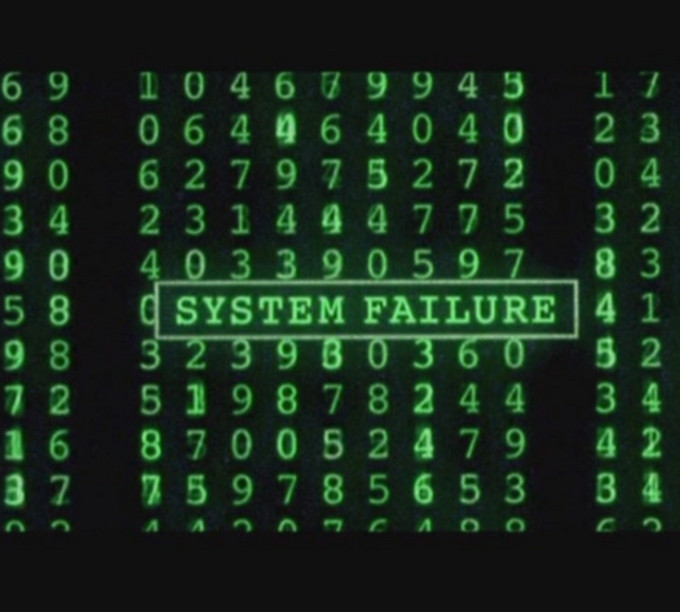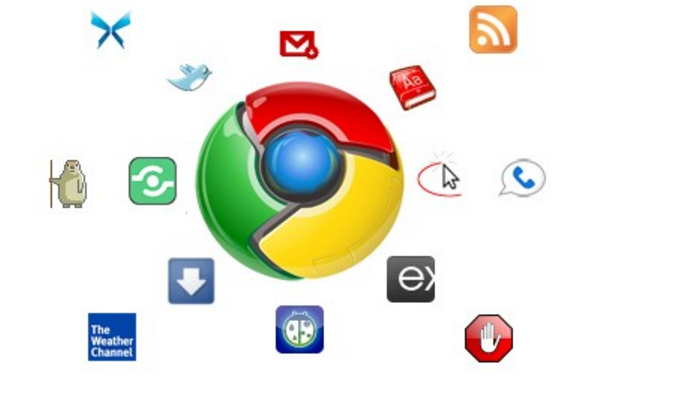
The terms “network” and “networking” have a rather nebulous definition, depending on who you ask; of course, for so many in our spam infested, hypersocial and intrinsically interconnected world, “networking” involves something as simple clicking on a friend or connection request online.
For others still, “networking” involves attending an in person event, where it’s often just easier to quaff a few cold ones and eat some finger foods while standing around making awkward shop talk than it is to go home and bathe the kids or pay the bills.
At the end of the day, what “networking” actually is can get a little bit murky, given the fact that pretty much everyone has a different definition. Consequently, what we should be doing to effectively build our “networks” becomes increasingly opaque and obtuse, too.
The fact that we can’t even agree on a universal definition of this ubiquitous concept underscores the fact that making your network work works differently for everyone – that is, if they even work at all.
Now, as someone who quite literally networks for a living, I’ve had to endure my fair share of networking events, from happy hours to industry get-togethers to the odd career fair or coffee klatsch, and often, these things admittedly bore me to tears. On the flip side, of course, I’ve been fortunate enough to develop strong relationships with the people I’m lucky enough to work with, and my professional network has grown more or less organically thanks largely to those colleagues and coworkers around me.
And I’m not talking about just people who were kind of cool to work with and maybe throw back a few with after work, either. Those “connections” are a dime a dozen. Nope. I’m talking about the people who I truly feel like I’ve developed the sort of personal connection that’s deep enough to form the foundation of a potentially life-long friendship, both personally and professionally.
Allow me just a moment, if you will, to paint you a picture of my world – circa 2011 – and illustrate exactly what it is I’m talking about.
Recruiter for Hire.
 I left the company I currently am back working for now back in 2009. It was probably a mistake. It was a tough decision, and there are still times I look back and debate if I was just young(er) and dumb(er) than I am these days, and realize that I was just chasing titles and bucks, not knowing that neither one of those things would ultimately make me happy. Would I have done things any differently?
I left the company I currently am back working for now back in 2009. It was probably a mistake. It was a tough decision, and there are still times I look back and debate if I was just young(er) and dumb(er) than I am these days, and realize that I was just chasing titles and bucks, not knowing that neither one of those things would ultimately make me happy. Would I have done things any differently?
While hindsight is always 20-20, the answer for me is still mixed, and rightfully so – because it reminded me that in so many cases, what looks to be a door that’s long ago slammed shut turns out to be a portal to another dimension you hadn’t even considered, but one that turns out to be pretty great nevertheless.
And as a guy who has (with no exaggeration) lucked into a damn-near perfect career as a recruiter, a great marriage with the yin to my yang, and two beautiful kids, I should probably have a little more faith by now that things always turn out for the better.
But it sure didn’t feel like it at the time when I found out the title (and bucks) I had chased were about to be eliminated. And just like that, I went from recruiting candidates to being one – the tables turn pretty quickly when you’re in the recruiting business.
Now, I swear to you, you’ve never seen a recruiter hit the phones or their LinkedIn network so hard in their life as I did when I started my search. Among the first calls I made were to a couple of my trusted colleagues, Ian Jones and Liam Darmody, to be exact, both of whom just so happened to be working over at LivingSocial at the time. Ian had given Liam his first gig out of college back in the day, and it just so happened that Liam and I happened to have played hockey together for years.
Small world, right?
As it turns out, they happened to be hiring, and needed competent recruiters yesterday. When could I start? To be honest, I was a little skeptical at first when I thought about making the move over to LivingSocial. I mean, here I am, in the later years of my mid-30s, going to work for a tech startup in the fiercely competitive e-commerce field – in DC of all places, which more or less guaranteed the most hellish commute conceivable – with a kid, a mortgage, and a whole lot of other obligations riding on the outcome of what was shaping into a pretty momentous decision. What if this flopped, too?
To compound things, to get my foot in the proverbial door, I was going to have to come in on a contract basis. Me. A contractor. The thought of that demotion in status alone stung just a little bit.
So, here I am, faced with being forced out of a job I was only at for a year (crap, now I’m a job hopper, on top of everything else), and having left a job I loved, in many ways (what…have…I…done?!?), to go to some startup, where I was going to be a contractor. But I didn’t have a whole hell of a lot of options, and long story short, I took the contract gig. And almost instantly, I not only knew I made the right decision, but I honestly fell in love with life at LivingSocial. Eventually, I accepted a full time role and ditched my short term contract for what looked to be the ride of my life.
Except the grinding commute through the crushing gridlock that took over an hour each way, I finally felt like I had a home again when I went to work.

Living(Social) The Dream.
Say what you will about all those wonky culture perks out there, and whether or not they’re actually relevant to workplace productivity, employee engagement, recruiting or retention. If you really care about whether these add business value or are just some sort of thinly veiled attempt at brainwashing, there are plenty of articles out there on the topic; I have no need to add to what’s already a pretty well worn subject.
And yeah, LivingSocial was one of those companies where we had the Segway, all sorts of free beer, and even a sweet NBA Jam arcade game. We had XBoxes galore, and more toys than my kids could ever stash away at home, or ever hope to play with.
And swag – my God, did we have swag. This was back when we were in full on brand building mode, and when I first started, you couldn’t go one single, solitary day in D.C. and not see someone on the street wearing a LivingSocial shirt, I shit you not. But the office perks and the branded gear and all that other stuff were just a part of what made our culture so cool; most of it was, in fact, pretty peripheral, once you got over the initial awe of it all and gotten acclimated to the company and its culture.
Bottom line, even with a two hour commute, it was a pretty sweet work environment – even for me, the token thirtysomething old fart in the office. Hey, you’re never too old to have fun.
The everyday atmosphere and office environment were always electric, and you could feel the energy of so many people so enamored with being part of something that was not only going to shake up the world of e-commerce as we know it, but also firmly, finally, put the D.C. startup scene on the map and emerge as THE flagship technology company in the area.
We were taking the scene by storm, and everyone in town knew when us “LivingSocialites” were in the house. We represented, and did so with pride, because we were part of something that was going to change everything.
Were there too many long days and even longer nights? Was there too much work and never enough resources? Were there moments of absolute frustration or the occasional lapse in judgement and/or sanity?
Sure, but that’s what you expect when you sign up for an early stage start-up. And when that company, like LivingSocial, is (at the time) valued over a billion dollars, all eyes are on the prize.
“Many of us came from employment in DC that was uneventful and boring. The thought of working for a budding start up / innovative company IN Washington D of all places (!!) was exciting. We were all looking for ‘something’ and found it at LS. LivingSocial was something we could rally behind and believe in, and a place where we could work in a very scrappy setting with people just as passionate as the next, believing they were making an impact in global ecommerce. This, at a time when in DC, more young people were opting to stay in the city, while the city’s art, tech, and creative scene began to flourish.”
– Alex Lopoukhine, Former Manager of Strategic Operations, LivingSocial.
From the very first interaction I had with LivingSocial, their values and culture were always crystal clear, and were inexorably intertwined with everything the company did, ingrained into every employee’s every action. We had a very strong, very tangible culture – one that evolved and grew along with the company, even from its earliest days.
I discussed LivingSocial and its culture with Liam, who as one of the earliest employees, was also one of the most influential forces shaping the LivingSocial culture, as he continued to run product operations for several departments, working across functions and groups as much as anyone else in the company. What made the culture so different, I wondered?
“The LivingSocial values — Live Hungry, Champion Good Ideas, Recognize Others, Make Strong Moves, Surprise & Delight — were unlike your typical corporate platitudes. They were genuine and in and of themselves reflected not only what it meant to be a good employee at LivingSocial, but also what it meant to be a good person and professional. Establishing a set of values such as these at the onset made it easy to identify talent that embraced these concepts and would fit into the culture.”
- – Liam Darmody, Former Director of Sales Operations, LivingSocial.
As a recruiter, I can tell you that we screened candidates for culture fit as much as hard skills, because we all felt the values, and were all expected to live them each and every day. It wasn’t always easy, but if the fundamental values fit wasn’t there to begin with, working at LivingSocial was pretty much impossible, because the culture and the work were more or less inseparable.
And for the most part, it worked – and most of the time, made our world of work work better.
Now, with all that said, sure – mistakes were made. If they weren’t, I wouldn’t be back to my four minute commute at my old company and/or writing this TLDR manifesto. And yeah, we could rehash all of the decisions I disagreed with or all the things that should have been done differently on the way. LivingSocial had a great culture, but as a business, should we have been satisfied with being the Pepsi to Groupon’s Coca-Cola, the perennial also-rans comfortable perpetually stuck in the penultimate position?
Probably. But I’m not sure that complacency or compromise were a deal with the devil that any LivingSocial employee, management or otherwise, was ever going to be willing to make. We believed WAY too much, and we despised Groupon so much that we’d never, ever concede to the competition that we collectively hated and would do anything to beat – a little competition is a healthy thing until it comes at the cost of common sense, turns out.
But I’m not here to talk about all the ‘should have beens’ that never were. The LivingSocial ship has long ago sailed, and what legacy they leave behind will not involve the revolutionary impact they made on the world of e-commerce, but instead, the collective fates of the many dedicated, talented and passionate professionals after they left the hallowed halls of headquarters and moved on, as we do, to the next step in our careers – although, I think, none of us have really moved on, entirely.
The experience will always stay with us, no matter how diffuse our directions or destinies might be – and that, I think, is what ‘legacy’ is all about, really.
LivingSocial, Die Hard: The Axeman Cometh.
 All good things must come to an end, and nowhere is that more true than in the high stakes startup world. So, it should have come as no surprise when, two years into living the LivingSocial dream, the first signs of the nightmare to come surfaced back in 2013 when the first big round of layoffs was announced.
All good things must come to an end, and nowhere is that more true than in the high stakes startup world. So, it should have come as no surprise when, two years into living the LivingSocial dream, the first signs of the nightmare to come surfaced back in 2013 when the first big round of layoffs was announced.
By announced, by the way, I mean that those of us on the HR team had been dispatched from headquarters as a covert “Death Squad,” traipsing across DC to give those employees unlucky enough to be impacted the bad news, and their walking papers.
You’d think that this would be pretty routine, working in the talent organization at a high growth, high tech company, but you’d be wrong. In fact, this wasn’t just another WARN notice – this was crying masses clutching their personal effects as they tearfully walked past the lines of cameras and reporters inevitably set up to stalk every one of our offices.
Seriously, this was, in D.C. at least, a very BIG FREAKING DEAL – the pride of the D.C. tech scene finally fallen, a unicorn with blown out hoofs seemingly staggering for survival.
The press and public, of course, couldn’t get enough.
I vividly remember those first few employees we notified, and really feeling for them – this wasn’t their fault, after all, and I offered every one of them personal help with their job search, a promise I followed through on for any who ultimately reached out. Why? Because that’s what you do for people you go to war with. And I wasn’t the only one, not by a long shot.
It seems as though people left a trail of breadcrumbs behind them when they left LivingSocial behind for other opportunities, and it didn’t take much to follow, since most of the folks who had left were snatched up by other companies pretty quickly and were well positioned to help their former colleagues or coworkers do the same.
Names would resurface; we’d figure out who was hiring, and for which companies and roles. Putting people back in touch with each other and rekindling old connections soon became the norm, and no matter how many times we’d ask, it turned out that much of the time we didn’t have to ask at all.
We helped each other out because we cared about each other, whether we were simply cordial co-workers, close friends or just colleagues who happened to occasionally run into at the company Kegerator or romp together in the company ball pit (yes, this was a real thing) back in 2011.
“The roller coaster that was LivingSocial was full of interesting, smart, quick thinking individuals that all wanted to see each other and the company succeed. I still feel blessed that I was able to spend almost 5 years there from the ground up. I have been motivated by this group through job searches and have been able to reconnect with Matt Lidle at edmunds.com where we now both work.”
– Kelly Armstrong, Former Regional Sales Manager, LivingSocial.
Networks That Work: What Real Culture Really Looks Like In Action.
 Fast forward five years to 2016, and even though LivingSocial is mostly a distant memory, the network we were a part of while we were there remains as strong and impactful as ever. We’ve never stopped looking out for each other, and over 1,600 former employees continue to post 20-25 new opportunities a WEEK to the Facebook group we’re all a part of.
Fast forward five years to 2016, and even though LivingSocial is mostly a distant memory, the network we were a part of while we were there remains as strong and impactful as ever. We’ve never stopped looking out for each other, and over 1,600 former employees continue to post 20-25 new opportunities a WEEK to the Facebook group we’re all a part of.
Now, I’d always heard that company alumni groups were a powerful tool for networking and an effective way to help find that next gig, but this group is really the first time I’ve ever been lucky enough to live through the reality of an alumni network that really works.
There’s nothing like knowing there are 1,600 people (and growing) out there looking out for you and who’ve got your back if you ever need a helping hand. You know what that’s called?
It’s called culture, and this is what it looks like in action – we continue to live the same values we always did at LivingSocial. Well after the paychecks stopped, the value of working there continues to pay off. Big time.
Which is pretty cool, really.
“LivingSocial was undoubtedly a springboard for the careers for many in this group. I speak for myself when I say it was like a catapult in terms of experience and skills in the industry I wanted to be in. Upward mobility is much easier with a name like LS on a resume. I’ve been able to get two former LSers jobs with my company.
More interestingly, LS was also a catalyst for many of its former employees to start their own endeavors, many of which are doing phenomenally well. Take Caviar and Framebridge for example. These are former LSers hiring former LSers on new business endeavors that seem to be scaling at a reasonable level. While LS might not be doing so well, it’s been a launchpad for many, many people. And those people are doing their best to give back to the community that helped them thrive.”
The footprint of former LivingSocial employees in the D.C-metro area is visible, widely-impactful and alive. Look around at the companies that have spawned from the brains of former LivingSocial employees, including Framebridge and Galley. Many others went on to get picked up at some larger companies, like Edmunds and CapitalOne. Some of us, like me went back to where we were before, but this time around, smarter, more savvy, and re-energized by what we now knew what were capable of doing as professionals and colleagues.”
– Ian Jones, Former Recruiting Associate, LivingSocial.
When we were first starting to scale our hiring at LivingSocial, those of us on the recruiting team knew that we were building something special, and that every hire we made contributed to the greater cause we had all committed ourselves to, personally and professionally. We were passionate about what we stood for, and made sure candidates knew that this was more than a job – it was a real opportunity to really move the needle. It sounds cliche, sure, but at the time, it was absolutely true, too.
There was no such thing as putting “butts in seats,” because every single hire who came through the door, particularly during those critical stages in the company’s growth, would have real responsibilities and really make an impact on our business and bottom line. Of course, that ability to truly impact things or make any sort of significant difference changes once those first few hires become hundreds, than thousands, of employees. By the middle of 2011, LivingSocial was no longer the place to come if you wanted options worth millions, or to rocket up the leadership chain, or get the killer workplace environment and perks that helped define our unique company culture. So, we shifted.
We stopped talking about driving change and started talking about the means instead of focusing on the end goal. We started discussing the experiences, the journey, and the people each prospective new hire would meet along the way at LivingSocial.
The value was in the learning – we could offer a unique opportunity to see what worked inside a fast growing startup, and what missed the mark. This was the kind of experience and exposure that would help build the knowledge and relationships that might not lead you to the top of the org chart, but just might lead you to your next big thing. Whether that was working at your own startup, or landing, like many LivingSocial alumni, at places like Amazon, Google or Facebook, no matter where their journeys ended up taking them, we provided a way to help get our employees find their way, every day.
Today, whether through funding, leadership or expertise, most of the activity on the red hot DC startup scene can be traced back to the early successes of a handful of companies like WebMethods and AOL; recently, however, we’re starting to see LivingSocial start to have a similar impact locally, its alumni network spreading out and planting the seeds for the next generation of DC tech companies to take hold.
Their common roots, of course, run back through a company that might not end up going down as the most successful startup story the DC area has seen from a financial standpoint, but will continue to make a long term impact on the culture of innovation and entrepreneurship in our area. This impact will be the ultimate legacy of LivingSocial.
If you were lucky enough to work there, than you know what I’m talking about. If you didn’t, you probably knew someone who did.
And while the long term business and bottom line results of LivingSocial might well grant it the dubious distinction of joining such high profile, high tech busts as Pets.com or Webvan in the footnotes of history, there’s no question that when it comes to the lasting network of people who have each other’s backs – and best interests – in mind, LivingSocial will live on in the memories of all of us who were proud of what we did there, and what we continue to do today.
While we’re no longer having epic NERF wars or hosting awesome events at the old digs at 918 F Street, we might not know where we’re going next, but all of us want to remember where we came from.
 About the Author: Pete Radloff has 15 years of recruiting experience in both agency and corporate environments, and has worked with such companies as Comscore, exaqueo, National Public Radio and Living Social.
About the Author: Pete Radloff has 15 years of recruiting experience in both agency and corporate environments, and has worked with such companies as Comscore, exaqueo, National Public Radio and Living Social.
With experience and expertise in using technology and social media to enhance the candidate experience and promote strong employer brands, Pete also serves as lead consultant for exaqueo, a workforce consulting firm.
An active member of the Washington area recruiting community, Pete is currently a VP and sits on the Board of Directors of RecruitDC.
Follow Pete on Twitter @PJRadloff or connect with him on LinkedIn, or at his blog, RecruitingIn3D.



 This product sucks.
This product sucks.
 The Bottom Line.
The Bottom Line.
 Turns out there’s good news, there’s bad news, and there’s LinkedIn Customer Service. At least, this was the discovery I made after an excruciating 25 minute long phone call with a LinkedIn “Customer Service” representative (and I’m using the term loosely), who, after making me more or less jump through hoops and barrels for a half hour of my life that I’ll never get back in a frustratingly futile attempt to troubleshoot what I had thought was a fairly straightforward and simple issue, had the audacity to tell me, just when I was about to snap, that she had some “good news…”
Turns out there’s good news, there’s bad news, and there’s LinkedIn Customer Service. At least, this was the discovery I made after an excruciating 25 minute long phone call with a LinkedIn “Customer Service” representative (and I’m using the term loosely), who, after making me more or less jump through hoops and barrels for a half hour of my life that I’ll never get back in a frustratingly futile attempt to troubleshoot what I had thought was a fairly straightforward and simple issue, had the audacity to tell me, just when I was about to snap, that she had some “good news…”

 A few days later, on February 16, I was contacted by what LinkedIn refers to as a Corporate Escalations Agent (CEA1) and had to again reiterate the issue I was having, complete with documentation and a full explanation of the situation and its (lack) of resolution to date. The CEA responded by telling me that my issue would be researched, and as soon as they had found a fix or workaround, they’d immediately let me know and contact me back.
A few days later, on February 16, I was contacted by what LinkedIn refers to as a Corporate Escalations Agent (CEA1) and had to again reiterate the issue I was having, complete with documentation and a full explanation of the situation and its (lack) of resolution to date. The CEA responded by telling me that my issue would be researched, and as soon as they had found a fix or workaround, they’d immediately let me know and contact me back.

 About the Author: Neil Elenzweig currently serves as Principal and Managing Partner for Divergent Source Group, which specializes in executive search for the built environment, conducting strategic recruiting and professional placement for the architecture, design, building materials, commercial real estate, construction and related manufacturing industries.
About the Author: Neil Elenzweig currently serves as Principal and Managing Partner for Divergent Source Group, which specializes in executive search for the built environment, conducting strategic recruiting and professional placement for the architecture, design, building materials, commercial real estate, construction and related manufacturing industries.
 There are two reasons we don’t trust people.
There are two reasons we don’t trust people.






 Willem Wijnans builds the product and platform teams at Improbable.io, an a16z backed startup from London. He is also a mentor at Rockstart, a startup accelerator in Amsterdam. Follow him on
Willem Wijnans builds the product and platform teams at Improbable.io, an a16z backed startup from London. He is also a mentor at Rockstart, a startup accelerator in Amsterdam. Follow him on 
 I don’t think it’s unfair to call spam “the fossil fuel of recruiting” – it’s cheap, it’s easy and it gets the job done. On the other hand, though, it’s non-renewable, non-sustainable and polluting our entire environment while slowly killing us all. This is the price we pay for convenience. Now, let’s get real. The reason that you send spam is because it’s easy.
I don’t think it’s unfair to call spam “the fossil fuel of recruiting” – it’s cheap, it’s easy and it gets the job done. On the other hand, though, it’s non-renewable, non-sustainable and polluting our entire environment while slowly killing us all. This is the price we pay for convenience. Now, let’s get real. The reason that you send spam is because it’s easy. There’s a movement – primarily via a closed Facebook group, so I suppose calling it a “movement” might be a little generous, given it’s more or less social astroturfing – that’s surfaced recently called #FightSpam. This is led by
There’s a movement – primarily via a closed Facebook group, so I suppose calling it a “movement” might be a little generous, given it’s more or less social astroturfing – that’s surfaced recently called #FightSpam. This is led by  Let’s stop for a second and ask the obvious question: how the hell did we get here? How did we damage our ecosystem so badly? If you’re seriously considering that question, look no further than LinkedIn’s devolution over the past five years or so. Compare what it was then to what it’s become today.
Let’s stop for a second and ask the obvious question: how the hell did we get here? How did we damage our ecosystem so badly? If you’re seriously considering that question, look no further than LinkedIn’s devolution over the past five years or so. Compare what it was then to what it’s become today. I know this is not new news, but yet again, here’s yet another place where recruiters need to
I know this is not new news, but yet again, here’s yet another place where recruiters need to  When we talk about fighting spam, it’s time we changed the vocabulary of exclusion, the acceptance that spam is a problem but a refusal to take personal responsibility for the bigger problem, and realize that if we want to reduce, reuse and recycle enough to slow the disastrous climate change already occurring, then we need to make this an issue that all of us have a stake in. It’s not one company, or just everyone else, who does this shit. It’s all of us, which is how we’re going to have to work if we ever want to fix it.
When we talk about fighting spam, it’s time we changed the vocabulary of exclusion, the acceptance that spam is a problem but a refusal to take personal responsibility for the bigger problem, and realize that if we want to reduce, reuse and recycle enough to slow the disastrous climate change already occurring, then we need to make this an issue that all of us have a stake in. It’s not one company, or just everyone else, who does this shit. It’s all of us, which is how we’re going to have to work if we ever want to fix it. Candidates don’t respond to logic. It might be obvious you have a better brand, a better job, a better opportunity (that word again), but that’s not what sells candidates – you’ve got to win them over on emotion. Recruiters, on the other hand, seem to need a justification for everything, so let’s think about this rationally for a minute. The “talent pools” we build, from external networks, internal systems or point solutions are often shallow enough to sit down in.
Candidates don’t respond to logic. It might be obvious you have a better brand, a better job, a better opportunity (that word again), but that’s not what sells candidates – you’ve got to win them over on emotion. Recruiters, on the other hand, seem to need a justification for everything, so let’s think about this rationally for a minute. The “talent pools” we build, from external networks, internal systems or point solutions are often shallow enough to sit down in. Mike Wolford has over 9 years of recruiting experience in staffing agency, contract and in house corporate environments. He has worked with such companies as Allstate, Capital One, and National Public Radio.
Mike Wolford has over 9 years of recruiting experience in staffing agency, contract and in house corporate environments. He has worked with such companies as Allstate, Capital One, and National Public Radio.
 If you work in recruiting, there’s probably a good chance that while you’ve felt the effects of public relations (which is almost always collateral damage), you don’t have any real insight into what PR does on a day to day basis.
If you work in recruiting, there’s probably a good chance that while you’ve felt the effects of public relations (which is almost always collateral damage), you don’t have any real insight into what PR does on a day to day basis.
 I can’t really say I miss my days in PR with any sort of nostalgia, nor do I think of it fondly – in fact, in retrospect, it kind of sucked. So, why do I bring all of this up?
I can’t really say I miss my days in PR with any sort of nostalgia, nor do I think of it fondly – in fact, in retrospect, it kind of sucked. So, why do I bring all of this up?
 Of course, Hubspot ostensibly knows more about the average recruiter about what marketing success and building compelling customer communications entails, so let’s take a look at their actions in the aftermath of the book’s release. First off, they fired everyone even remotely associated with the book, which can only be interpreted as a scare tactic to suppress any internal dissenters and preempt them speaking to the media, or even weighing in anonymously online or being quoted by the press, even without attribution.
Of course, Hubspot ostensibly knows more about the average recruiter about what marketing success and building compelling customer communications entails, so let’s take a look at their actions in the aftermath of the book’s release. First off, they fired everyone even remotely associated with the book, which can only be interpreted as a scare tactic to suppress any internal dissenters and preempt them speaking to the media, or even weighing in anonymously online or being quoted by the press, even without attribution.

 Recruiters are hunters of information. Contact information, profile pages and resumes are our reward and tools that help us find them are obviously our favorites. The challenge, of course, is that information gets old. Those elusive developers stop joining social networks or posting their information to avoid the repetitive calls and half-witted e-mails from the recruiters among us not so savvy to do something as simple as customize their e-mail.
Recruiters are hunters of information. Contact information, profile pages and resumes are our reward and tools that help us find them are obviously our favorites. The challenge, of course, is that information gets old. Those elusive developers stop joining social networks or posting their information to avoid the repetitive calls and half-witted e-mails from the recruiters among us not so savvy to do something as simple as customize their e-mail.


 The Bottom Line.
The Bottom Line.
 First off, let me just say that I am pretty much the world’s biggest Donald Trump fan, and in fact, 100% agree with everything The Donald has ever said or done. Just kidding.
First off, let me just say that I am pretty much the world’s biggest Donald Trump fan, and in fact, 100% agree with everything The Donald has ever said or done. Just kidding.



 There’s a very good reason vendor is a four letter word in recruiting and HR. That’s because almost everyone in the business of business development for any product or service in our industry (and there are literally thousands) pretty much sucks.
There’s a very good reason vendor is a four letter word in recruiting and HR. That’s because almost everyone in the business of business development for any product or service in our industry (and there are literally thousands) pretty much sucks. This right here is every SaaS salesperson’s dream – getting an actual meeting with an actual decision maker. Chuck sends me a meeting invite; I accepted, with every intention of keeping the meeting, even though, let’s just say, Chuck didn’t necessarily start things off on the right foot. But everyone deserves a second chance, and I thought there was a slight chance it might end up worth the time it took to hear him out. Hey, nothing’s impossible, right?
This right here is every SaaS salesperson’s dream – getting an actual meeting with an actual decision maker. Chuck sends me a meeting invite; I accepted, with every intention of keeping the meeting, even though, let’s just say, Chuck didn’t necessarily start things off on the right foot. But everyone deserves a second chance, and I thought there was a slight chance it might end up worth the time it took to hear him out. Hey, nothing’s impossible, right?
 Now, back to Chuck. OK, so as we’ve established, several months of stalking and a pretty shady pseudo-referral e-mail later, I decided to finally book a quick call with the guy, only to have him blow me off at the last minute and ask if I could possibly reschedule for a meeting that I was actually planning to attend and had even prepared for (I’m old fashioned like that).
Now, back to Chuck. OK, so as we’ve established, several months of stalking and a pretty shady pseudo-referral e-mail later, I decided to finally book a quick call with the guy, only to have him blow me off at the last minute and ask if I could possibly reschedule for a meeting that I was actually planning to attend and had even prepared for (I’m old fashioned like that).
 About the Author: Jennifer Davis is the Sr. Director, People Strategies & HR Technology at Epsilon, the global leader in creating connections between people and brands, supporting 15 of the top 20 global brands and recognized by Ad Age as the #1 World CRM/Direct Marketing Network.
About the Author: Jennifer Davis is the Sr. Director, People Strategies & HR Technology at Epsilon, the global leader in creating connections between people and brands, supporting 15 of the top 20 global brands and recognized by Ad Age as the #1 World CRM/Direct Marketing Network.
 This whole series was built to make you a better technical recruiter, but ultimately, it is up to you to make sure you don’t sound like an idiot. Once you have vetted out your candidates, it is time to submit them to hiring managers. This is your opportunity to shine. Take your knowledge and let it fly – as long as you know what the hell you’re talking about. Here is where you show that you are not just good, you are the
This whole series was built to make you a better technical recruiter, but ultimately, it is up to you to make sure you don’t sound like an idiot. Once you have vetted out your candidates, it is time to submit them to hiring managers. This is your opportunity to shine. Take your knowledge and let it fly – as long as you know what the hell you’re talking about. Here is where you show that you are not just good, you are the  Package your candidate in a way that makes them (and you, in the end) the star. Show them you’ve done your work vetting the candidate. Then, set up time to review with your candidates. Make sure that you are taking thorough notes and that you are asking the questions the hiring managers are looking for. A nicely packaged candidate will include:
Package your candidate in a way that makes them (and you, in the end) the star. Show them you’ve done your work vetting the candidate. Then, set up time to review with your candidates. Make sure that you are taking thorough notes and that you are asking the questions the hiring managers are looking for. A nicely packaged candidate will include:


 For years now in the world of social recruiting, there’s been a litany of subjective stories, anecdotal evidence and “thought leadership” (or lack thereof) about how “one simple trick” or “silver bullet” that can be effectively, easily and universally leveraged to double or triple your online engagement, impressions and reach.
For years now in the world of social recruiting, there’s been a litany of subjective stories, anecdotal evidence and “thought leadership” (or lack thereof) about how “one simple trick” or “silver bullet” that can be effectively, easily and universally leveraged to double or triple your online engagement, impressions and reach.
 Social Recruiting’s State of Grace.
Social Recruiting’s State of Grace. But brands almost never do that. Brands are narcissists of the worst kind: they offer little in return for your money, time, and loyalty.
But brands almost never do that. Brands are narcissists of the worst kind: they offer little in return for your money, time, and loyalty. A long time ago, I was Bucky Badger (the official mascot for the University of Wisconsin) on Twitter.
A long time ago, I was Bucky Badger (the official mascot for the University of Wisconsin) on Twitter.

 Look, let’s get one thing straight about social recruiting.
Look, let’s get one thing straight about social recruiting.

